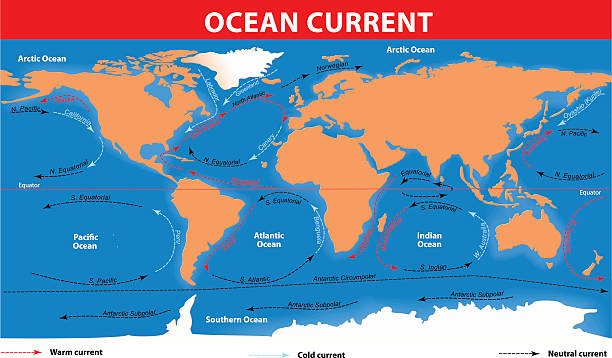Welcome to Term 3 of your Grade 11 Geography course! This term promises to be an engaging and enlightening journey through the complexities of development, trade, community-based approaches, and the various issues and challenges that intersect with these themes. Following the Curriculum and Assessment Policy Statement (CAPS), our syllabus aims to provide a balanced mixture of theoretical understanding and practical skills, enriching your grasp on the subject matter.
The core aim of this term is to delve deep into the intricacies of development. We’ll kick off with a comprehensive overview of key terminology and concepts related to development. Our exploration won’t just be restricted to economic aspects; we’ll also focus on social, sustainable, and spatial dimensions of development.
Mapping skills will be another crucial part of our learning journey. Using topographic maps and atlases, you will hone your skills in calculating area, locating positions, and understanding scales and distances, which are critical real-world skills for any budding geographer.
In the latter part of the term, we will navigate through the waters of international trade, globalization, and the challenges and benefits these bring to the development landscape. This will be enriched by case studies that illustrate the impact of these phenomena on local, regional, and global scales.
Our curriculum also provides room for discussing pressing contemporary issues, such as the environmental consequences of development and the role of aid in shaping growth trajectories. We will delve into this through lectures, interactive discussions, practical exercises, and case studies.
Geography Grade 11 Questions and Answers for Term 3
Unit 1: Development
Learning Objectives:
- Understand the terminology associated with development.
- Grasp the concept of development.
- Differentiate between Developed, Developing, MEDC’s, LEDC’s, and industrial countries.
- Study economic, social, and demographic indicators like GNP, GDP, HDI, GINI-coefficient, life expectancy, and infant mortality.
- Learn how to locate an exact position using degrees and minutes on Topographic Maps.
Topics:
- Introduction to Development
- Developed vs Developing Countries
- Economic Indicators: GNP, GDP
- Social Indicators: HDI, Life Expectancy, Infant Mortality
- Topographic Maps: Locating Exact Position
Questions and Answers
Q1: What does the term ‘development’ refer to in the context of geography?
A1: In the context of geography, development refers to the process by which a country or region improves the well-being of its citizens through economic growth, provision of infrastructure, and improved social services.
Q2: List three key terms that are often associated with development.
A2: Three key terms often associated with development are Gross Domestic Product (GDP), Human Development Index (HDI), and Life Expectancy.
Q3: How would you differentiate between a Developed Country and a Developing Country?
A3: Developed countries have a high standard of living, a strong and diverse economy, and advanced technological infrastructure. Developing countries, on the other hand, lack these attributes and are often characterized by poverty, lack of basic healthcare and education, and a weaker economy.
Q4: What are MEDCs and LEDCs?
A4: MEDCs stand for More Economically Developed Countries, and LEDCs stand for Less Economically Developed Countries. MEDCs have high levels of income per capita, highly industrialized, and have high standards of living. LEDCs are characterized by low income, high poverty, and lower standards of living.
Q5: What is GNP? How is it different from GDP?
A5: Gross National Product (GNP) measures the value of all goods and services produced by a country’s residents and businesses, including any income from overseas. Gross Domestic Product (GDP) only includes economic activity within the country’s borders, disregarding income from abroad.
Q6: What is the Human Development Index (HDI) and what does it measure?
A6: The Human Development Index (HDI) is a composite statistic that measures a country’s average achievements in three basic dimensions of human development: health (life expectancy), education, and per capita income.
Q7: How are life expectancy and infant mortality used as indicators of development?
A7: Life expectancy is often higher in developed countries, reflecting better healthcare and living conditions. Infant mortality rates are usually lower in developed countries for the same reasons, indicating better prenatal and infant healthcare.
Q8: How can you locate an exact position using degrees and minutes on a topographic map?
A8: On a topographic map, an exact position can be located using latitude and longitude coordinates, which are often given in degrees and minutes. Latitude lines run horizontally and longitude lines run vertically on the map. By identifying the intersection of the specific degrees and minutes of latitude and longitude, you can locate an exact position.
Feel free to use these questions and answers as a review guide or a tool for assessment to ensure you are meeting the learning objectives of Unit 1 in Term 3.
Unit 2: Framework for Development
Learning Objectives:
- Understand factors that affect development like access to resources, energy, history, trade imbalances, etc.
- Learn to calculate area, distance, and understand scale on topographic maps.
Topics:
- Factors Affecting Development
- Resource Limitations and Environmental Degradation
- Topographic Maps: Scale, Distance, Calculating Area
Questions and Answers
Q9: What are some of the key factors that affect the development of a country or region?
A9: Some key factors that affect development include access to resources, availability and use of energy, historical background, trade imbalances, political stability, quality of education, and healthcare infrastructure.
Q10: How does history impact the development of a country?
A10: The historical background of a country can have a significant impact on its development. Factors such as colonization, war, and trade relationships can influence a country’s economy, social structures, and even its relationships with other countries.
Q11: Explain how trade imbalances can affect development.
A11: Trade imbalances can lead to unequal development. A country that consistently imports more than it exports may deplete its foreign reserves, leading to debt. On the other hand, countries that export more than they import accumulate wealth, which can be used for further development.
Q12: How do resource limitations impact the development of a country?
A12: Resource limitations can severely impede the development of a country. Lack of vital resources like water, arable land, and minerals can limit industrial growth, agricultural productivity, and overall well-being of the population.
Q13: What is environmental degradation and how does it relate to development?
A13: Environmental degradation refers to the deterioration of the environment due to human activities like deforestation, pollution, and overfishing. It can have long-term adverse effects on development by depleting natural resources that are essential for economic growth.
Q14: Explain the concept of scale on a topographic map.
A14: The scale on a topographic map indicates the ratio between distances on the map and actual distances on the ground. For example, a 1:50,000 scale means that 1 cm on the map represents 50,000 cm (or 500 meters) in reality.
Q15: How do you calculate area on a topographic map?
A15: To calculate the area on a topographic map, you can use the scale to convert map dimensions to real-world dimensions. Once you’ve converted, you can use formulas like length x width for rectangles or (base x height)/2 for triangles to find the actual area.
Q16: How do you understand distance on a topographic map?
A16: Distance on a topographic map can be understood through its scale. By measuring the distance between two points on the map and then using the scale to convert that measurement into real-world distance, you can determine how far apart the two locations actually are.
Unit 3: Community-Based Development
Learning Objectives:
- Explore the complexity and interrelated nature of factors affecting development.
- Understand approaches to rural and urban development through case studies.
Topics:
- Community-based development strategies
- Rural and Urban Case Studies
- Topographic Maps: Scale, Distance, Calculating Area
Unit 4: Trade and Development
Learning Objectives:
- Understand the basics of international trade and world markets.
- Analyze commodities traded and terms of trade.
- Grasp the concept of globalization and its impact on development.
- Learn to use atlases for locating places and comparing information from different maps.
Topics:
- International Trade and World Markets
- Commodities and Terms of Trade
- Globalization and its Impact
- Using Atlases: Map Index, Locating Places
Unit 5: Development Issues and Challenges
Learning Objectives:
- Understand the effect of development on the environment.
- Learn how to locate places using degrees and minutes on atlases.
Topics:
- Environmental Impact of Development
- Using Atlases: Map Index, Locating Places
Unit 6: Role of Development Aid
Learning Objectives:
- Understand the concept of development aid and development cooperation.
- Differentiate between types of development aid: Technical, Conditional, Humanitarian.
- Study the impact of aid on development through case studies.
Topics:
- Types of Development Aid
- Impact of Aid on Development
- Topographic Maps: Scale, Distance, Calculating Area
Each unit will involve classroom lectures, interactive discussions, case studies, and practical exercises, including map reading. By the end of this term, students should have a comprehensive understanding of the multi-faceted issues surrounding development and how it impacts various regions globally.





